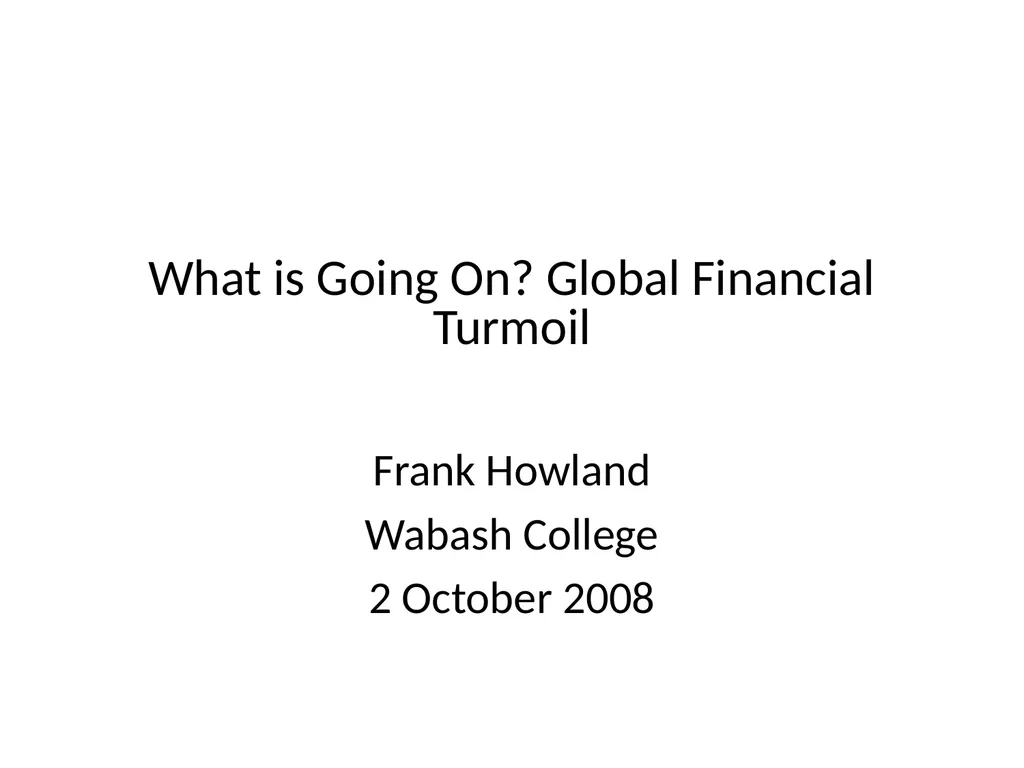
Author : cheryl-pisano | Published Date : 2025-06-23
Description: What is Going On? Global Financial Turmoil Frank Howland Wabash College 2 October 2008 Executive Summary Modern capitalist economies are prone to financial crises The current crisis was caused by the housing bubble, excessive leverage, andDownload Presentation The PPT/PDF document "" is the property of its rightful owner. Permission is granted to download and print the materials on this website for personal, non-commercial use only, and to display it on your personal computer provided you do not modify the materials and that you retain all copyright notices contained in the materials. By downloading content from our website, you accept the terms of this agreement.
Here is the link to download the presentation.
"What is Going On? Global Financial Turmoil Frank"The content belongs to its owner. You may download and print it for personal use, without modification, and keep all copyright notices. By downloading, you agree to these terms.













